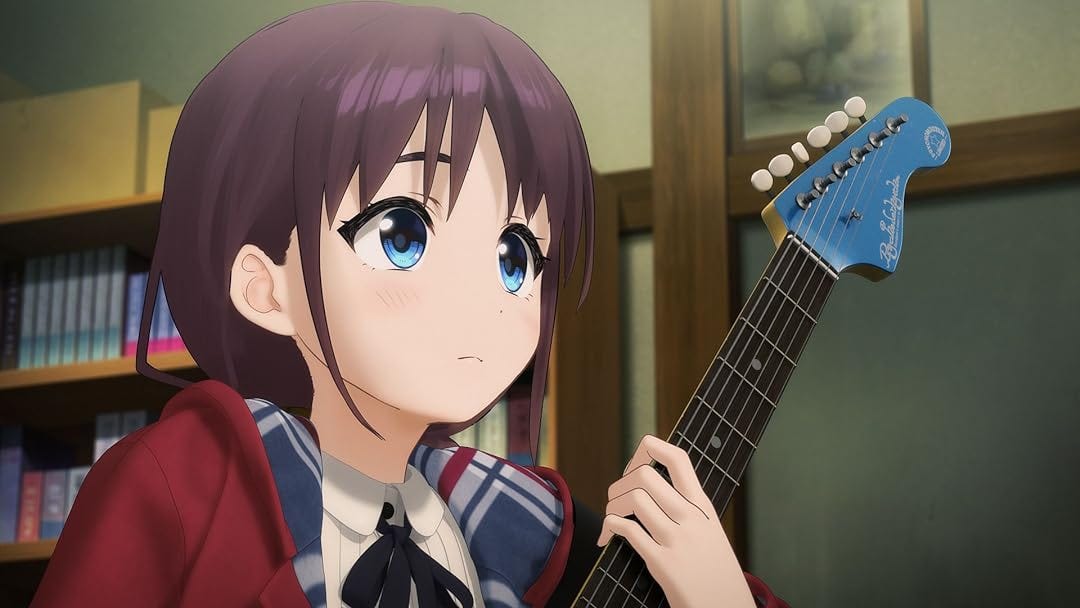VTubers enable acceptance of CG anime
Plus: Manga translation startup plans U.S. digital manga store; Online proxy shopping rises as yen weakens; Young viewers redefine anime and live-action films; and more
This is your weekly Animenomics briefing, covering the business of anime and manga. Today is Wednesday, May 8, 2024.
In case you missed it: Newsletter Animation Obsessive retraced the production history and eventual success of Mamoru Oshii’s landmark 1995 anime film Ghost in the Shell.
Writer Matt Alt also recalled his internship at the Chicago office of Manga Entertainment, the London-based company that helped underwrite the film.
Fans are interested, but no int’l streamers for CG anime

Girls Band Cry, a new series about a fledgling girls’ rock band, is billed as a next generation 3D computer graphics anime, but its absence from overseas streaming platforms hinders efforts to increase acceptance of such productions.
Why it matters: Some anime audiences outside Japan are still struggling to accept computer-generated work, The New York Times reported earlier this year.
Backgrounder: Anime made using 3D CG usually strive for either a photorealistic approach or one that tries to replicate the traditional cel animation look.
Most 3D CG television anime productions in Japan today fall in the second category, animation researcher Daisuke Tanaka writes in Kai-You.
When cel shading is applied to 3D CG models, shadows are usually drawn with clear boundaries between dark and light areas.
The intrigue: Girls Band Cry doesn’t use cel shading. It instead uses more realistic shadow gradients without venturing into CG’s uncanny valley, says Tanaka.
“It’s an attempt to reproduce the character design illustrations as they are in the animation,” Toei Animation producer Tadashi Hirayama told Japanese media last September.
The bigger picture: The surging popularity of virtual YouTubers—streamers who use computer-generated virtual avatars—in recent years has significantly lowered the hurdles for acceptance of CG and enabled this approach.
“It’s one of the reasons why we adopted the illustration look,” Hirayama told Nikkei Entertainment! magazine last month.
Yes, but: Girls Band Cry remains unavailable outside Japan, with one fan creating a petition to encourage streaming platforms to acquire the series for distribution.
Girls Band Cry’s absence abroad is puzzling because Toei Animation has repeatedly stated that the fictional band’s music videos receive more than 60 to 80 percent of its views from other countries.
Domestically, social media marketing was also hampered by a monthslong dispute between Universal Music Group—the project’s music label—and TikTok, shutting down the official account right before the show premiered.
Manga localization startup raises ¥3B for digital store

Tokyo-based manga localization technology company Orange, which develops an AI-based translation service, has raised ¥2.92 billion (US$18.8 million) to scale up operations and launch a digital manga store in the United States.
Why it matters: With manga sales surging in the U.S., Orange wants to bring 50,000 new English-translated manga volumes to the market by 2029.
The company says that only about 14,000 of the approximately 700,000 manga volumes published in Japan have been translated into English.
The details: Orange incorporated a subsidiary, Orange USA Inc., in Delaware in March as it prepares to launch the Emaqi digital manga store this summer.
Shogakukan and the venture capital arm of an investment fund backed by the Japanese government are among the company’s pre-Series A financiers.
How it works: Orange claims its proprietary mass translation tool Factory can cut the time and cost of translations by as much as 90 percent.
Factory primarily uses optical character recognition technology to detect text in manga and applies deep learning processes to conduct translation.
While Factory is designed to be able to handle wordplay often seen in manga, Orange also employs translators and typesetters to polish the results.
The company says it can produce a fully translated manga volume in as little as two days.
Of note: At the Globis G1 Executive Conference last November, Orange CEO Shoko Ugaki told attendees that he once rejected a request by an overseas venture capital firm to open-source his tool because he feared it would promote piracy.
Reality check: Writing for comics news portal The Beat, manga consultant Deb Aoki found that Orange’s cost-saving claims have been met with skepticism by U.S. manga translation professionals.
As previously reported by Animenomics, Shueisha came under fire last year for using Orange’s tool to generate typesetting for a series published on its international MANGA Plus app.
Clippings: Weak yen drive online proxy merch purchases

Consumers outside Japan are spending more on proxy shopping websites as the yen weakens to a 34-year low, with one service seeing increased sales in Pokémon cards and manga merchandise. (Nikkei Asia)
Crunchyroll increased prices for its top two subscription tiers in North America, marking the first price increase for the streaming service in five years. Its most popular tier, Mega Fan, will see a 20-percent increase. (Anime News Network)
Publishing giant Kadokawa has formed Bellnox Films, the group’s fifth anime studio subsidiary, under the leadership of David Production co-founder and former president Koji Kajita. (Press release)
Kochi Prefecture’s Anime Creator Festival is emerging as a new model for local government support of the anime industry as Machi Asobi is cancelled because of changes to Tokushima Prefecture government policy. (Anime Hack)
Young viewers blur lines between live-action and anime
“Over the past five or six years, when I talk about live-action and animation in my college classes and elsewhere, the meaning of ‘live-action’ has been changing among students around the age of 20. For them, ‘live-action’ doesn’t refer to live-action films like Godzilla or Seven Samurai, but rather live-action adaptations of manga.”
— Daisuke Watanabe, Atomi University faculty of letters associate professor
Context: In a wide-ranging conversation covering current trends in Japan’s anime and film industries for Real Sound, Watanabe told fellow anime critics Ryota Fujitsu and Hodaka Sugimoto that some of the distinctions between anime films and live-action films are becoming blurred.
What he’s saying: “It isn’t that they can’t distinguish between live-action and animated films, but when they think of live-action, they first think of live-action adaptations of manga originals,” Watanabe clarified.
He also notes that students who mention anime in his classes generally refer to television anime programs, whereas anime films like Your Name are simply films, much to the critics’ surprise.
Animenomics is an independently-run and reader-supported publication. If you enjoyed this newsletter, consider sharing it with others.



Girls Band Cry deserves more recognition, for sure. Thanks for sharing all these details about it, I'm glad to know more people is willing to accept and enjoy a really good CGI anime ❤️
The news about Orange is fascinating. It is staggering to think how much more content can be localized into English for a wider market.